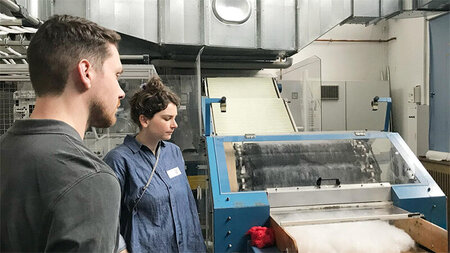
Growth, development, and structural change at the firm-level: The example of the PR China
Torsten Heinrich, Jangho Yang and Shuanping Dai
Additional contact information
Torsten Heinrich: Faculty for Economics and Business Administration, Chemnitz University of Technology
Jangho Yang: Institute for New Economic Thinking at the Oxford Martin School, University of Oxford
Shuanping Dai: School of Economics, Jilin University
No 40, Chemnitz Economic Papers from Department of Economics, Chemnitz University of Technology
Abstract: Understanding the microeconomic details of technological catch-up rocesses offers great po-tential for informing both innovation economics and development policy. We study the economictransition of the PR China from an agrarian country to a high-tech economy as one examplefor such a case. It is clear from past literature that rapidly rising productivity levels played acrucial role. However, the distribution of labor productivity in Chinese firms has not been com-prehensively investigated and it remains an open question if this can be used to guide economicdevelopment. We analyze labor productivity and the dynamic change of labor productivity infirm-level data for the years 1998-2013 from the Chinese Industrial Enterprise Database. Wedemonstrate that both variables are conveniently modeled as Lévy alpha-stable distributions,provide parameter estimates and analyze dynamic changes to this distribution. We find thatthe productivity gains were not due to super-star firms, but due to a systematic shift of theentire distribution with otherwise mostly unchanged characteristics. We also found an emergingright-skew in the distribution of labor productivity change. While there are significant differencesbetween the 31 provinces and autonomous regions of the P.R. China, we also show that there aresystematic relations between micro-level and province-level variables. We conclude with someimplications of these findings for development policy.
Pages: 49 pages
Date: 2020-12
References: Add references at CitEc
Citations: Track citations by RSS feed
Published in Chemnitz Economic Papers, November 2020, pages 1-49
Downloads: (external link)
https://www.tu-chemnitz.de/wirtschaft/vwl1/RePEc/CEP040_heinrich.pdf First version, 2020 (application/pdf)
Related works:
This item may be available elsewhere in EconPapers: Search for items with the same title.
Export reference: BibTeX RIS (EndNote, ProCite, RefMan) HTML/Text
Persistent link: https://EconPapers.repec.org/RePEc:tch:wpaper:cep040
Access Statistics for this paper
More papers in Chemnitz Economic Papers from Department of Economics, Chemnitz University of Technology Contact information at EDIRC.
Bibliographic data for series maintained by Christian Kulitza ( this e-mail address is bad, please contact ).






